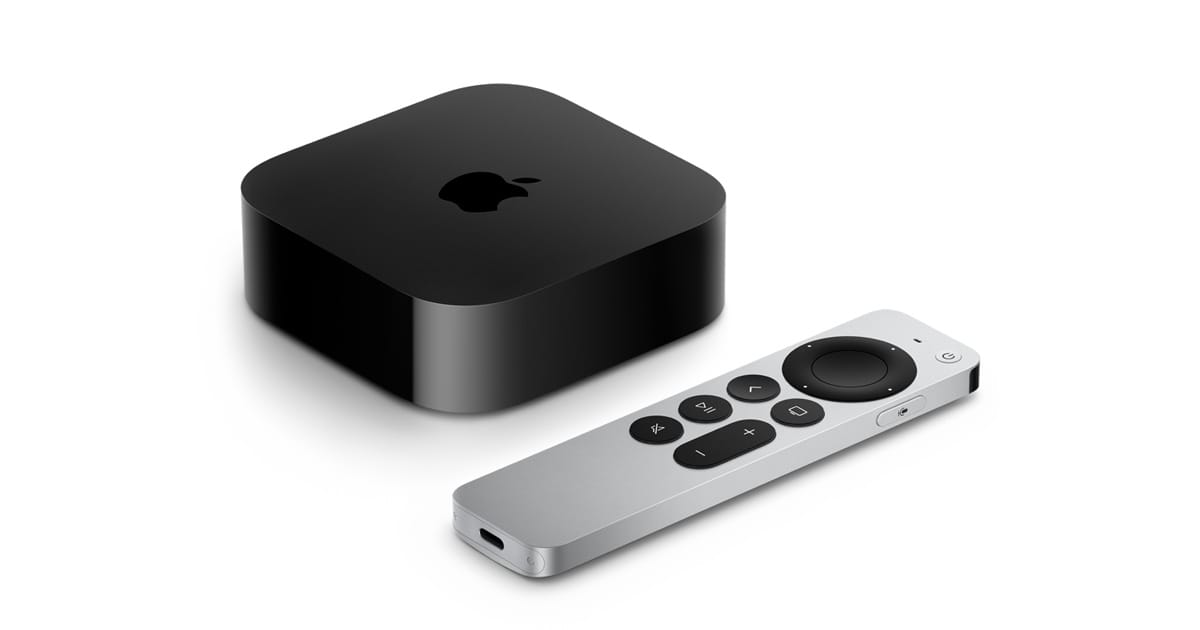This article contains affiliate links. As an Amazon Associate, Next Level Mac earns from qualifying purchases.
Apple TV 4K and modern Macs can look incredible on a good display. The quiet hero is the cable between them and the screen.
HDMI can feel like alphabet soup. The trick is to choose a certified Ultra High Speed HDMI cable and the right length, then stop worrying.
This guide keeps it calm and practical. Three picks cover living rooms, gaming rooms, and travel bags without guesswork.
Each one is certified at 48 Gbps, which is what unlocks features like 4K at 120 Hz, HDR, VRR, and eARC on compatible TVs and receivers.
If none of those features are used today, that is fine. A certified cable still helps avoid weird blackouts, sparkles, or audio dropouts.
What to know in 30 seconds
A certified Ultra High Speed HDMI cable carries the bandwidth for Apple TV 4K, PlayStation, Xbox, and most modern Macs.
Lengths of 1 to 2 meters work best from a TV stand or desk. Longer runs are possible, but that is when active or fiber designs make sense.
For receivers and soundbars, look for eARC support in the TV and audio gear. The cable itself is the same type, which is nice and simple.
⸻
Pick 1: Zeskit Maya Ultra High Speed HDMI 2.1, 2 m
Zeskit’s Maya series is a popular certified cable that supports the full 48 Gbps spec for 4K120 and 8K video. It is a straightforward choice for Apple TV 4K and for connecting a Mac to a 4K display.
The jacket is flexible enough for tight TV stands, and the molded heads fit well in recessed HDMI bays. The 2-meter length reaches from a console shelf or receiver to the TV without strain.
It is labeled “Ultra High Speed HDMI” and includes the QR code for certification, which is the easy way to avoid counterfeits.
Here’s where you can buy the Zeskit Maya Ultra High Speed HDMI 2.1 Cable 2 m (Amazon Affiliate Link):
https://www.amazon.com/Zeskit-48Gbps-Certified-Compatible-Samsung/dp/B08TRCQHWZ?tag=blainelocklai-20&gbOpenExternal=1
For living rooms that mix Apple TV 4K, a game console, and a receiver, this cable keeps bandwidth headroom for everything. No special settings are needed beyond enabling the features on the TV.
If cable clutter is a concern, coil the extra length in a loose loop and tuck it behind the stand. Hard kinks near the connector are what shorten a cable’s life.
⸻
Pick 2: Belkin Ultra High Speed HDMI 2.1, 2 m
Belkin’s certified 2-meter cable is a clean, reliable pick that plays nicely with tight ports and wall-mounted TVs. The 48 Gbps rating handles 4K120, HDR formats like Dolby Vision, and eARC.
It is available in a braided finish, which helps when the cable needs to slide past a wall bracket or through a grommet. The strain relief at the ends is generous without being bulky.
Belkin’s packaging includes the official Ultra High Speed certification label. That is helpful when buying more than one and mixing lengths.
The place to get the Belkin Ultra High Speed HDMI 2.1 Cable 2 m (Amazon Affiliate Link):
https://www.amazon.com/Belkin-Ultra-High-Speed-Cable/dp/B097PGJNWT?tag=blainelocklai-20&gbOpenExternal=1
This is a good match for Apple TV 4K owners who want Dolby Vision and Atmos over eARC. If a TV supports those features, the cable will not be the limit.
For desks, a 2-meter length can reach from a Mac dock to a monitor on an arm without putting tension on the port.
⸻
Pick 3: Cable Matters Braided Ultra High Speed HDMI 2.1, 2 m
Cable Matters offers a certified braided HDMI 2.1 cable rated to 48 Gbps. The braided jacket is tough for setups where the cable runs through a media cabinet or around a mount.
Connector shells are slim, so they clear stacked ports and recessed panels on many TVs and monitors. Labels on each end make it easy to trace which device is connected.
As with the others, it supports 4K120, 8K60, HDR, VRR, ALLM, and eARC when the devices support them. That keeps options open for future gear changes.
Use this link to get the Cable Matters 2 m Braided Ultra High Speed HDMI 2.1 Cable (Amazon Affiliate Link):
https://www.amazon.com/Cable-Matters-48Gbps-Braided-RTX3080/dp/B08KSKQ8CC?tag=blainelocklai-20&gbOpenExternal=1
If the Apple TV 4K shares a TV with a console, this cable handles both without needing to swap. That is one less thing to think about on movie night.
For projector owners, the 2-meter length is fine at the rack. For ceiling runs, jump to an active or fiber HDMI designed for long distances.
⸻
Apple TV 4K: the settings that actually matter
Match Dynamic Range and Match Frame Rate: Turning these on helps reduce judder and color tone surprises when switching apps. The cable supports the switches without flicker if the TV and receiver do.
Audio Format set to Auto (with eARC): Let the TV and receiver handle Dolby Atmos or DTS where supported. A stable HDMI link is what keeps audio dropouts away.
Chroma setting: If a TV allows it, 4:4:4 or 4:2:2 can make UI text look crisper. The bandwidth of a certified cable covers these modes at 4K60 and, on some sets, 4K120.
Game Mode / VRR: If the TV supports it, VRR smooths out frame pacing on consoles and gaming PCs. The Apple TV 4K does not need this, but having a 48 Gbps cable means the console does.
⸻
Macs and HDMI: what to expect
Many modern Macs connect displays through USB-C or Thunderbolt docks. An HDMI port on the dock often tops out at 4K60. That is normal and still looks sharp for productivity.
For higher refresh rates like 4K120, a direct USB-C to HDMI 2.1 adapter or a USB-C display may be required. The HDMI cable still needs the 48 Gbps rating for consistent results.
If a Mac is used with a receiver or soundbar, enable eARC on the TV and receiver. The HDMI cable type stays the same, which keeps system planning simple.
⸻
Choosing the right length
1 meter is tidy for a console that sits right under the TV. 2 meters gives room for a receiver or soundbar in the chain.
Longer than 3 meters is where signal integrity becomes more sensitive. At that point, look for active or fiber HDMI cables specifically marketed for long runs and still certified.
Avoid pulling a cable tight around sharp edges. Gentle curves protect the internal wires and reduce intermittent glitches.
⸻
Small fixes for big HDMI headaches
Blank screen on app launch: Try a different HDMI input on the TV. Some inputs on older sets cap bandwidth or disable features by default.
Audio drops with eARC: Verify eARC is enabled on both TV and receiver. Use the TV’s audio menu to set eARC to “On” and audio format to “Auto” rather than “PCM only.”
Flicker when switching frame rate: This pause is normal while devices renegotiate. If it lingers, reboot the TV and Apple TV 4K to reset the HDMI handshake.
No 4K120 option: Confirm the TV input is set to Enhanced/4K120/PC mode. The cable is capable; many TVs ship those inputs off by default.
⸻
A quick note on HDMI “versions” on boxes
Retail packaging may shout HDMI 2.1, but the certification logo is the important part. Look for “Ultra High Speed HDMI Cable” and the QR code. That is what the HDMI Forum uses to validate performance.
Claims like “8K ready” or “10K” are marketing fluff. The 48 Gbps certification is the real spec that maps to Apple TV 4K needs today.
⸻
eARC in plain language
eARC lets a TV send full-quality audio back to a receiver or soundbar over HDMI. That includes Dolby Atmos from apps like Apple TV+, Disney+, and Netflix when available.
The same Ultra High Speed cable is used between TV and receiver, and again from receiver to Apple TV 4K. No special “eARC cable” is required.
If lip sync drifts, look for a “lip sync” or “audio delay” slider in the TV or receiver menu. A stable certified cable helps keep that adjustment small.
⸻
When fiber HDMI makes sense
If a projector is mounted on a ceiling or the TV is across the room from the equipment rack, a fiber HDMI cable is a clean solution for distances beyond 5 to 10 meters.
Fiber cables are directional. Follow the arrows marked “source” and “display” so signals go the right way. They still advertise the same Ultra High Speed certification.
For most living rooms and home offices, a 1- to 2-meter passive cable is all that is needed. Start simple and only step up if the layout demands it.
⸻
Clean install tips
Label each cable end with a small tag. It saves time when moving gear around later.
Leave a little slack behind the TV so ports are not stressed when the screen tilts or swivels.
Bundle excess length with a soft Velcro tie rather than a hard twist tie. Tight wraps can pinch the jacket and create flaky behavior.
⸻
FAQ
Does a pricier HDMI 2.1 cable improve picture quality?
If both are certified Ultra High Speed, picture quality is the same. Pay for length, build, or brand support, not claimed “better pixels.”
Is an HDMI 2.1 cable required for Apple TV 4K?
A certified Ultra High Speed cable is ideal. It prevents bandwidth bottlenecks and unlocks features on modern TVs and receivers.
Will these work with older 4K60 TVs?
Yes. They are backward-compatible and simply run at the lower rate.
What about ARC vs eARC?
ARC handles compressed surround audio. eARC supports higher-quality formats and Atmos from apps. The same cable works for both.
Do I need HDMI 2.1 for a Mac monitor?
If the monitor is HDMI-only and supports 4K120, yes. Many Mac users will still prefer DisplayPort via USB-C for high-refresh monitors.
⸻
Final picks recap
• Zeskit Maya Ultra High Speed HDMI 2.1, 2 m: flexible, certified, and easy for tight TV stands.
• Belkin Ultra High Speed HDMI 2.1, 2 m: braided option with slim ends and full 48 Gbps.
• Cable Matters Braided Ultra High Speed HDMI 2.1, 2 m: tough jacket and slim shells for crowded ports.
Three cables, one simple rule: certified and the right length. That is how Apple TV 4K and Mac displays stay sharp, smooth, and drama-free.



Related Posts
What Apple Didn't Announce, and When It's Coming
Oct 21, 2025
Apple TV Rebrand: What Changes and What to Do Now
Oct 13, 2025
tvOS 26: Apple TV features worth trying tonight
Oct 09, 2025